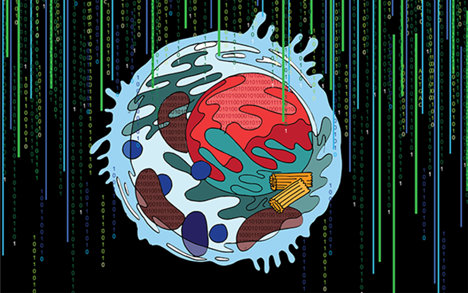
AI technique reveals previously unknown cell components
Throw away the textbooks again. Researchers at University of California San Diego School of Medicine and collaborators have taken a significant leap forward in the understanding of human cells. The technique used, known as Multi-Scale Integrated Cell (MuSIC), is described in Nature.
Trey Ideker, PhD, professor at UC San Diego School of Medicine and Moores Cancer Center led the study with Emma Lundberg, PhD, of KTH Royal Institute of Technology in Stockholm, Sweden and Stanford University.
In the pilot study, MuSIC revealed approximately 70 components contained within a human kidney cell line, half of which had never been seen before. For example, a group of proteins forming an unfamiliar structure eventually determined to be a new complex of proteins that binds RNA. The complex is likely involved in splicing, helping to determine which genes are activated at which times. What’s different about MuSIC is the use of deep learning to map the cell directly from cellular microscopy images.
Microscopes allow scientists to see down to the level of a single micron, about the size of some organelles, such as mitochondria. Smaller elements, such as individual proteins and protein complexes, can’t be seen through a microscope. Biochemistry techniques, which start with a single protein, allow scientists to get down to the nanometer scale. (A nanometer is one-billionth of a meter, or 1,000 microns.). Then, bridging the gap is artificial intelligence — looking at data from multiple sources and asking the system to assemble it into a model of a cell.
The team trained the MuSIC artificial intelligence platform to look at all the data and construct a model of the cell. The system doesn’t yet map the cell contents to specific locations, like a textbook diagram, in part because their locations aren’t necessarily fixed. Instead, component locations are fluid and change depending on cell type and situation.
This was a pilot study to test MuSIC. They’ve only looked at 661 proteins and one cell type.
Original Release: Eureka Alert
